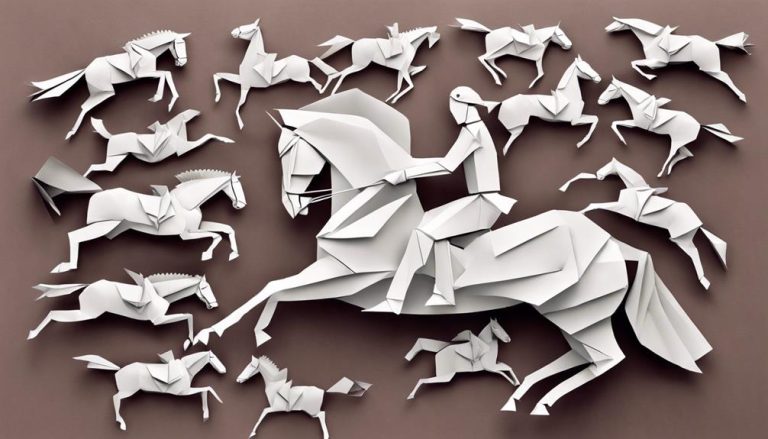General Rules of Endurance Racing
As you enter the world of endurance racing, you'll need to master a range of rules and guidelines. Before the race, meticulously prepare your gear and plan your strategy to gain a competitive edge. On the course, respect your fellow riders, maintain a safe distance, and communicate clearly with your support crew. Master the art of pacing and drafting, and stay informed about safety protocols and emergency procedures. Should you infringe on the rules, be prepared for penalties or even disqualification. With so much to absorb, the key to success lies in thorough preparation and a deep understanding of the rules that govern this demanding sport.
Pre-Race Preparation and Planning

As you gear up for the endurance racing challenge, it's crucial to dedicate time to meticulous pre-race preparation and planning, which can profoundly impact your performance and overall success. A thorough gear check is essential, ensuring your bike, helmet, and other equipment are in top condition. Don't overlook the small details, as a faulty brake pad or worn-out tire can be disastrous. Next, turn your attention to weather forecasting. Study the forecast and be prepared for any conditions. Will it be scorching hot or freezing cold? Are there chances of rain or strong winds? Knowing what to expect allows you to dress appropriately, choose the right gear, and mentally prepare for the challenges ahead. A well-planned strategy will give you the confidence and edge you need to tackle the endurance racing challenge. By investing time in pre-race preparation and planning, you'll be able to tackle the course with confidence, ready to take on whatever comes your way.
On-Course Conduct and Etiquette
Mastering on-course conduct and etiquette is essential to a successful endurance racing experience, facilitating a respectful atmosphere among fellow riders, volunteers, and the environment while maintaining a competitive edge. As you navigate the course, remember that respectful passing is key. When overtaking, make sure to alert the rider ahead with a clear 'on your left' or 'on your right' to avoid startling them. Always maintain a safe distance and avoid sudden movements that could cause a collision. Be mindful of personal space, too – don't crowd fellow riders or attempt to draft illegally. Keep in mind that course marshals and volunteers are there to help, so be courteous and follow their instructions. Take care of the environment by disposing of trash and recyclables properly, and avoid littering. By following these simple guidelines, you'll not only promote a positive experience for yourself but also contribute to a respectful and enjoyable atmosphere for everyone involved.
Support Crews and External Assistance

You'll likely rely on your support crew to help you stay fueled, hydrated, and mechanically sound throughout the race, making their expertise and assistance invaluable in your pursuit of success. Effective crew communication is vital to facilitate seamless fuel handoffs, bike repairs, and nutritional support. Establish a clear communication plan with your crew, designating a lead communicator to coordinate handoffs and provide updates on your progress. During fuel handoffs, guarantee a smooth handover by having your crew member hold the fuel bottle and you take it, eliminating the risk of dropped bottles or spills. When receiving mechanical assistance, clearly communicate the issue to your crew, allowing them to prepare the necessary tools and parts. Remember, a well-coordinated support crew can be the difference between victory and defeat. By working together, you'll be able to tackle the demands of endurance racing with confidence and precision.
Pacing and Drafting Regulations
As you prepare for your next endurance race, you must understand the pacing and drafting regulations that can make or break your performance. You'll need to master pace line etiquette, learning when to take the lead and when to fall back, as well as develop effective drafting strategies to conserve energy. By doing so, you'll be able to optimize your energy conservation and stay ahead of the competition.
Pace Line Etiquette
When you're part of a pace line, maintaining a safe and efficient ride for everyone involved requires understanding the unwritten rules of pace line etiquette to guarantee a smooth and coordinated ride.
As you ride with your group, remember that group dynamics play a vital role in pace line etiquette. Respect for your fellow riders and demonstrating good cycling manners is paramount. Here are three key reminders to keep in mind:
- Communicate clearly: Use verbal cues or hand signals to alert others of obstacles, turns, or changes in pace.
- Hold your line: Maintain a steady pace and avoid sudden movements that might affect the riders behind you.
- Take your turn: Rotate through the pace line fairly and efficiently, allowing each rider to conserve energy and share the workload.
Drafting Strategies
In endurance racing, mastering drafting strategies can greatly reduce your energy expenditure, and understanding pacing and drafting regulations is vital to maximize this advantage. By positioning yourself behind a fellow rider, you can capitalize on the aerodynamic advantage, reducing air resistance and conserving energy. This technique, known as drafting, allows you to ride at a faster pace while expending less energy. However, you must be aware of wind shadows, areas where the air is turbulent and chaotic, making it difficult to maintain a steady pace. To take full advantage of drafting, you need to understand the rules governing this technique. For instance, you can only draft behind a rider for a limited time before taking a turn at the front. Ignoring these regulations can result in penalties or even disqualification. By grasping these rules and honing your drafting skills, you'll be able to conserve energy, ride more efficiently, and gain a competitive edge in endurance racing.
Energy Conservation
Mastering pacing and drafting regulations is essential to conserving energy, and you'll need to understand the intricacies of these rules to ride efficiently and avoid penalties. As you ride, remember that fuel efficiency is key to success in endurance racing. By optimizing your power management, you'll be able to conserve energy and maintain a consistent pace throughout the race.
Here are three key strategies to keep in mind:
- Ride in the sweet spot: Find a pace that allows you to maintain a high speed while conserving energy. This will help you avoid burning out too quickly.
- Draft strategically: Use drafting to your advantage by riding in the slipstream of other riders. This can help reduce wind resistance and conserve energy.
- Pace yourself: Avoid sudden bursts of speed, and instead focus on maintaining a consistent pace throughout the race. This will help you conserve energy and maintain a strong finish.
Safety Protocols and Emergency Procedures

As you prepare for an endurance race, it's essential you understand the safety protocols and emergency procedures in place. You need to know that there's a thorough emergency response plan tailored to the specific needs of the event, and that racing accident procedures are clearly outlined and communicated to all participants. By familiarizing yourself with these protocols, you can focus on the race itself, knowing that you're well-prepared for any situation that may arise.
Emergency Response Plans
You'll need a thorough emergency response plan in place, one that outlines specific safety protocols and emergency procedures to safeguard the well-being of everyone involved in the endurance racing event. This plan should include essential details such as Emergency Contacts, guaranteeing that critical information is readily available in case of an emergency.
In the event of a crisis, effective Crisis Communication is key to a swift and effective response. This includes having a clear chain of command, designated communication channels, and a plan for disseminating critical information to the necessary parties.
To establish a thorough emergency response plan, consider the following essential elements:
- Clear emergency protocols: Establish clear procedures for emergency situations, including evacuation routes, first aid stations, and communication protocols.
- Designated emergency responders: Identify trained responders who can provide aid in emergency situations, such as first responders or medical professionals.
- Regular drills and training: Conduct regular drills and training exercises to confirm that all participants are familiar with emergency protocols and procedures.
Racing Accident Procedures
In the event of a racing accident, your emergency response plan should kick in immediately, with a swift and coordinated response team scrambling to provide aid and secure the scene. As a driver, you'll want to prioritize your safety and the safety of others involved in the incident. Remember, your primary focus should be on providing first aid and stabilizing the situation until professional help arrives.
During the chaos, remain calm and follow protocol. Your team's accident analysis will help identify the root cause of the incident, which is vital for preventing similar accidents in the future. A thorough crash investigation will also help determine the severity of the incident and inform any necessary repairs or adjustments to your vehicle.
As you respond to the accident, be sure to gather as much information as possible, including witness statements, photos, and video footage. This data will be invaluable in the subsequent investigation and analysis. By following these procedures, you'll not only facilitate a swift recovery but also contribute to a safer, more responsible racing environment.
Penalties and Disqualification Guidelines
During endurance racing events, you're subject to a set of penalties and disqualification guidelines that guarantee fair play and safety on the track. These guidelines ensure that all participants adhere to the rules, maintaining a level playing field for everyone involved. Rules enforcement is crucial in endurance racing, as it promotes a culture of respect and accountability among drivers.
Penalty systems are in place to address various infractions, such as speeding in pit lanes, ignoring blue flags, or engaging in reckless driving. In cases of disputes, a clear process for dispute resolutions is followed to ensure fairness and transparency.
Here are three key aspects of penalties and disqualification guidelines:
- Penalty types: Time penalties, drive-through penalties, and stop-and-go penalties are used to address different types of infractions.
- Disqualification criteria: Repeated flagrant offenses, intentional blocking, or reckless driving can lead to disqualification.
- Appeal process: Teams can appeal penalties, and a clear process is in place to review and resolve disputes fairly and efficiently.
Frequently Asked Questions
Can I Wear Headphones During the Race for Music or Podcasts?
As you line up at the starting line, you wonder, can you wear headphones for a motivational boost? Yes, you can, but be cautious: make certain sound quality isn't compromised, and you can adjust volume control to stay aware of your surroundings.
Are There Any Age Restrictions for Participating in Endurance Racing?
You're wondering about age restrictions in endurance racing? Typically, youth categories are divided by age, but don't worry, you can still participate if you're under/over the limit – just apply for an age waiver!
Can I Change My Bike or Run Shoes During the Race?
"As you pedal and pound the pavement, can you swap out your trusty steed or kickers mid-race? Yes, you can change your bike or run shoes during the race, but remember to check tire pressure and prioritize bike maintenance to avoid a mid-race breakdown."
Can I Get a Refund or Deferment if I'm Injured Before the Race?
"If you're injured before the race, you might be eligible for a refund or deferment, depending on the event's Injury Policy. Check if you've purchased Insurance Options, and be prepared to provide Medical Certificates for a successful Race Withdrawal."
Are Spectators Allowed to Take Photos or Videos During the Race?
"Don't worry, you won't get in trouble for capturing the action! You're allowed to take photos and videos, just be mindful of camera etiquette and avoid flash photography that might distract the athletes."






